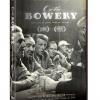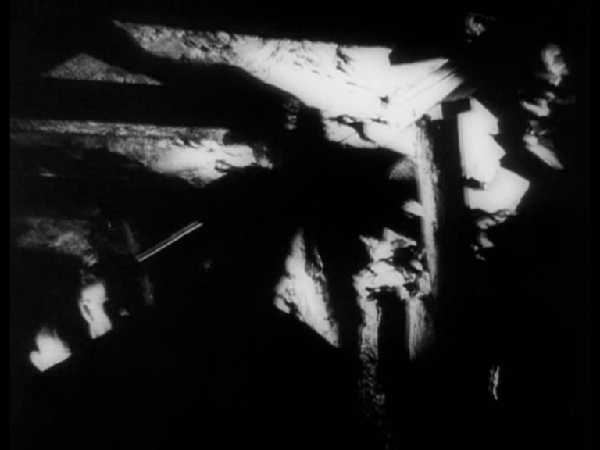Search the Community
Showing results for tags 'historical'.
-
Pawnbroker (1964) Nude Flashback Clip D.D.Teoli Jr. A.C. : D.D.Teoli Jr. A.C. : Free Download, Borrow, and Streaming : Internet Archive NSFW Customer asks for more money from the pawnbroker (Rod Steiger) and show off her breasts and offer sex for the money. Clip also shows nudity in the flashbacks to the German concertation camp in WW2. One of the earliest box office films to show nudity. Looks to be #2 on the nudity film list. Wikipedia: The distinction of being the first mainstream American actress to appear nude in a starring role went to actress Jayne Mansfield in the 1963 film Promises! Promises!, though her pubic area is never visible on film. The film was banned in Cleveland and some other cities, though later the Cleveland court decided the nude scenes in the film were not lewd. Both the original and an edited version enjoyed box office success elsewhere. As a result of the film's success, Mansfield landed on the Top 10 list of Box Office Attractions for that year. However, Chicago Sun-Times movie critic Roger Ebert wrote, "Finally in Promises! Promises! she does what no Hollywood star ever does except in desperation. She does a nudie. In 1963, that kind of box office appeal was all she had left." Mansfield's autobiographical book Jayne Mansfield's Wild, Wild World—which she co-wrote with Mickey Hargitay—was published directly after the release of the film. It contains 32 pages of black-and-white photographs from the movie printed on glossy paper. Photographs of a naked Mansfield on the set were published in the June 1963 edition of Playboy. The Pawnbroker, released in 1964, breached the Motion Picture Production Code with actresses Linda Geiser and Thelma Oliver (who later became the mystic and yoga teacher Krishna Kaur Khalsa) fully exposing their breasts. Allied Artists refused to cut the film and released it to theaters without a Production Code seal. The nudity resulted in a backlash from moral and religious conservatives, including the Catholic Legion (which by that time had become a virtually powerless fringe organization). However, critical and overall public response was positive, and many Catholics rebuked the Legion's condemnation of the film. The National Council of Churches even gave the movie an award for Best Picture of the Year. Some of the flashbacks are too fast for my liking. But would have to see them in slightly longer time to tell what works best. You have to test these things out. Very easy with digital, not so easy with film. <><><><> Daniel D. Teoli Jr. Archival Collection Daniel D. Teoli Jr. Small Gauge Film Archive Daniel D. Teoli Jr. Advertising Archive Daniel D. Teoli Jr. VHS Video Archive Daniel D. Teoli Jr. Popular Culture Archive Daniel D. Teoli Jr. Audio Archive Daniel D. Teoli Jr. Social Documentary Photography
-
- nudity in film
- historical
-
(and 5 more)
Tagged with:
-
I decided to check out the history of film stocks and their different formats, and I realized that there are no actual full-frame movie stocks that were ever developed or used for cinema back in those days. Full-frame as we cinema people interpret it today, from what I understand, came from digital manufacturers making sensors based on the 135mm film stock dimensions made for Photography: -Which are ~35mm wide in its negative and ~24mm tall negative(which is approximately the actual width of negatives on Super35mm film stocks, so basically it's like someone rotated Super35mm stocks 90 degrees) -Pulled along horizontally rather than vertically, which is actually what allows the ~35mm width negative Unless I'm missing something, why was there no Full-Frame( not the full-gate 35mm but the actual negative 36 x 24) ever used? It was quite surprising to see that cinema film stock developers decided to just jump straight into Medium Format from Super35. The only thing that might come close to it is VistaVision, but I'm not 100% sure if that actually qualifies as full frame . Thanks
- 15 replies
-
- full frame
- film
-
(and 3 more)
Tagged with:
-
Hello everyone, I've got some questions about materials and push-processing in the 30s. I'm working on a the British documentary "Coal Face" (1935) by GPO film unit. There is quite a bit of information on GPO in general but almost nothing on that particular film. I studied photography, so I could tell just looking at the film that some parts of it were heavily pushed. Since it's a scientific paper I can't just "know" it's the case, I have to bring arguments in favour of it. And while I know that the extreme graininess and high contrast are good indicators for push-processing, it would be even better if I could find further proof, and that's where my questions start. I'll include two screenshots from the film, that demonstrate the huge difference in quality. The first screenshot is from a scene above ground inside a building whereas the second was made in a coal mine. According to one of my sources [Enticknap, Leo. "Technology and the GPO Film Unit" The Projection of Britain: A History of the GPO Film Unit. Eds. Scott Anthony and James G. Mansell. London: Palgrave Macmillan on behalf of British Film Institute, 2011. 188-198.], the camera used by GPO was a Autokine with a 50mm/2in lens with a minimum aperture of f1.9, most likely one of these: https://www.scienceandsociety.co.uk/results.asp?image=10405810 Does anyone know where I could find out which stock they used? At the time most likely panchromatic, but that's about as far as I got. The other thing is, I found lots of information for photography and push-processing but next to nothing on film and push-processing, though I'm assuming it must have been quite common, especially in the documentary movement. If anyone knows of any (quotable) source for this kind of information, it would be a great help. I found some websites but a published book or an article in a journal is always preferable. Thanks a lot!
- 4 replies
-
- historical
- 30s
-
(and 3 more)
Tagged with:




